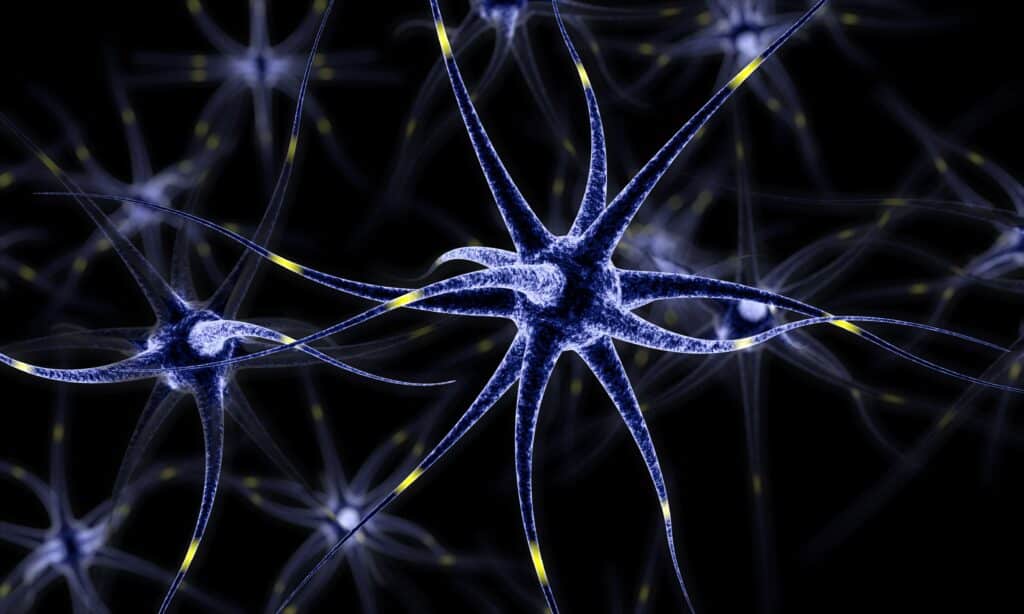Parkinson’s disease is a progressive neurodegenerative disorder with no known cure. Current treatment options are limited, aiming to alleviate some symptoms through a combination of medications, disease management strategies, and complementary therapies, but more effective treatment plans could be on the horizon. One approach that some researchers are trying is gene therapy. As experimental trials continue, these researchers hope that combining gene therapy for Parkinson’s disease with existing treatments could create a better, more comprehensive therapeutic approach for individuals with Parkinson’s disease.
Parkinson’s Disease Treatment Options
Patients with Parkinson’s disease experience a range of motor and non-motor symptoms, including tremors, rigidity, bradykinesia, and cognitive impairments. Treatment options have historically focused on alleviating these symptoms by using a combination of therapies, including the following:
- Medication that helps replace lost dopamine
- Disease management and lifestyle tools, like dietary modifications, stress management tips, and strategies for self-care
- Complementary therapies, which may include physical therapy, occupational therapy, and speech therapy
Research in this area is progressing. Recent advancements in Parkinson’s disease research include the development of improved medications to target the dopamine system, experimental closed-loop deep brain stimulation (DBS), therapies aimed at reducing alpha-synuclein production, and gene and cellular therapies.
Gene Therapy for Parkinson’s Disease
At the cutting edge of experimental Parkinson’s disease research is gene therapy. Several companies are investigating different approaches that utilize gene therapy for Parkinson’s disease treatment. Some of the techniques and targets researchers are pursuing include using gene therapy to regrow the dopamine system, spurring cells to produce dopamine, and glucocerebrosidase gene therapy.
Using Gene Therapy to Regrow the Dopamine System
In 1993, scientists discovered that a glial cell line-derived neurotrophic factor (GDNF) protein could potentially regrow dopamine nerve cells in a laboratory setting. In clinical trials that followed, GDNF was infused into the brains of individuals to try to regrow the dopamine system. The results of these trials were inconclusive, and it is still uncertain whether this therapy is effective.
Another gene therapy trial was based on the same principle, but focused on neurturin, a protein similar to (but less potent than) GDNF. In a double-blind, placebo-controlled clinical trial, researchers injected the AAV2-neurturin gene into the brain region responsible for dopamine release to try to promote dopamine fiber growth. However, the trial found no significant difference between participants who received neurturin therapy and those who did not at 12 months. A slight improvement in the treatment group was observed at 18 months, but a second trial after two years showed no therapeutic difference between the treatment groups.
Following the trials of GDNF and AAV2-neurturin gene therapies, researchers concluded that these therapies hold promise and could be more effective if provided earlier in the disease when there are still functioning dopamine fibers. As these fibers decline rapidly over the course of the disease, researchers noted that treatment within the first one to three years of diagnosis could be critical.
Spurring Cells to Produce Dopamine
Another gene therapy approach to Parkinson’s disease treatment focuses on infecting non-nerve brain cells, triggering them to release dopamine.
One gene therapy trial utilized a lentivirus to deliver the genes necessary for dopamine synthesis. Researchers found that three different doses of the therapy provided some benefit, although the results were less effective than deep brain stimulation (DBS) and other treatments.
Related trials have encountered roadblocks: OXB-102, a therapy that also utilized a lentiviral delivery system, showed promising initial results, but the trial was ultimately discontinued for financial reasons. And clinical trials of NBIb-1817 (VY-AADC01), an AAV-based gene therapy, were halted when unexplained brain abnormalities were observed in MRI scans.
Still, while these dopamine gene therapies have not yet demonstrated success, researchers believe they still hold promise for future Parkinson’s disease treatment.
Glucocerebrosidase Gene Therapy
A mutated GBA gene is a common genetic risk factor for Parkinson’s disease. Currently, an ongoing gene therapy trial focuses on injecting glucocerebrosidase gene therapy into individuals with GBA1-related Parkinson’s disease. The trial will assess the long-term safety of the therapy, the need for immunosuppression to manage inflammation caused by the treatment, the immune response generated, and preliminary indicators of effectiveness.
Cell Therapy
Cell replacement therapy aims to address Parkinson’s disease symptoms by injecting new dopamine cells into the brain to replace those lost or dying. Trials using human fetal dopamine cells have been ongoing since the late 1980s, but recent advancements in stem cell research have allowed scientists to create dopamine cells from adult stem cells. Analysis indicates that younger individuals in the early stages of Parkinson’s disease may benefit more from cell therapy, and factors such as tissue preparation, immunosuppression, and long-term follow-up are crucial for success.
Looking Forward
By targeting the underlying genetic causes and focus on regrowing the dopamine system, gene and cellular therapies offer the potential for new Parkinson’s disease treatment pathways. These therapies are still in the experimental stage, and challenges remain. Still, as trials progress, researchers are hopeful that gene therapy might eventually be a viable option to treat the symptoms and slow the progression of Parkinson’s disease, providing a ray of hope for more than 8 million people around the world.
QPS is a GLP/GCP-compliant CRO delivering the highest grade of discovery, preclinical, and clinical drug development services. Since 1995, it has rapidly expanded from a bioanalysis shop to a full-service CRO with 1,200+ employees in the US, Europe, India, and Asia. Today, QPS offers expanded pharmaceutical contract R&D services with special expertise in neuropharmacology, DMPK, toxicology, bioanalysis, translational medicine, and all phases of clinical development. QPS has CLIA-certified and GLP-compliant laboratories ready to fast-track gene therapy, RT-qPCR/QPCR, serological assays, and vaccine development programs. An award-winning leader focused on bioanalysis and clinical trials, QPS is known for proven quality standards, technical expertise, a flexible approach to research, client satisfaction, and turnkey laboratories and facilities. For more information, visit www.qps.com or email [email protected].






